The Fly Agaric, scientifically known as Amanita muscaria, is an iconic mushroom, to say the least. It has appeared in fairy-tales, legends, on t-shirts, in artwork, and, of course, video games. This single species has captured the imagination of many with its brilliant aesthetics and hallucinogenic properties.
This fungus, with its vibrant shades of red, orange, or yellow, is a common sight in many parts of the world. Despite its alluring appearance, though, it’s important to remember that the fly agaric is not just a pretty fungus. It carries a potent cocktail of psychoactive compounds, making it a toxic species that demands respect and careful handling.
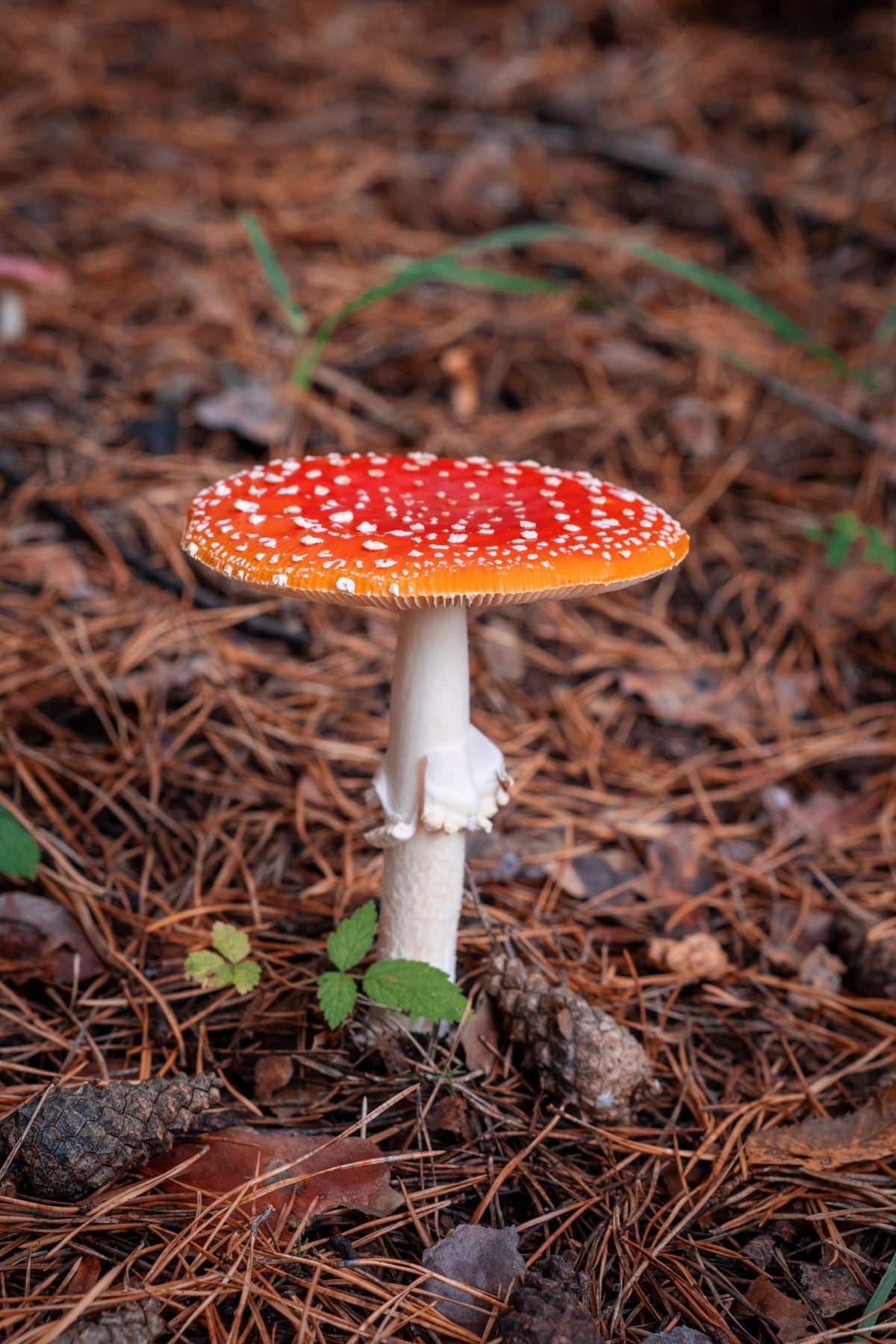
Jump to:
All About The Fly Agaric
The Fly Agaric is part of a rich history across many cultures around the world. It has been depicted in art, literature, and folklore for centuries. The mushroom’s distinct appearance makes it instantly recognizable and has contributed to its widespread cultural significance.
In many European countries, this mushroom was traditionally used as an insecticide. Crushed caps were placed in saucers of milk to attract flies, which would consume the milk containing the mushroom’s toxins and die. This practice gave rise to the common name “Fly Agaric.” The use of the mushroom might have actually led to its scientific name. In Latin, “musca” means fly. Another alternative theory is that “musca” refers to how a person reacts after eating the mushroom – it was believed at the time that a person could become mentally ill or unstable when a fly entered their head.
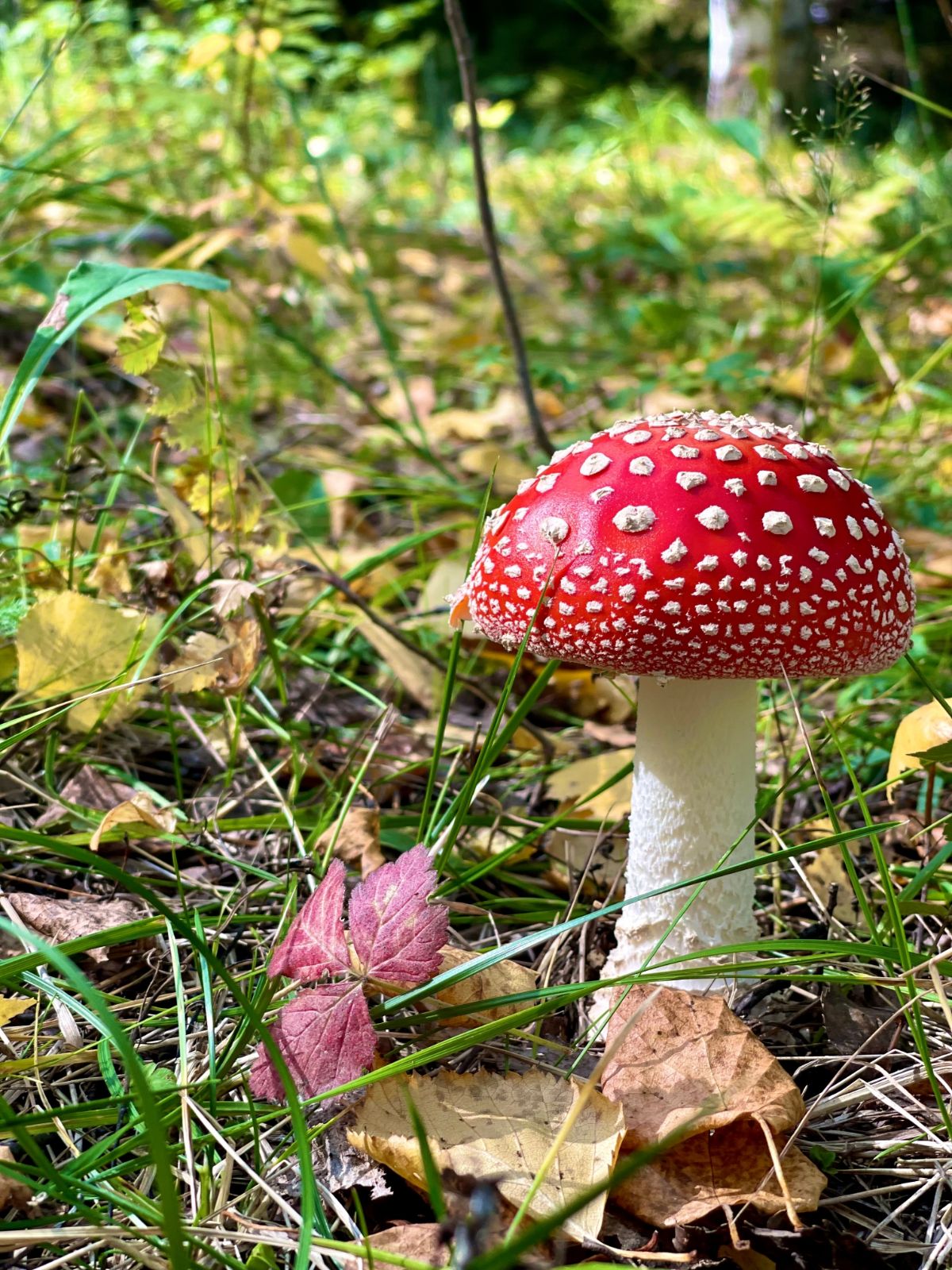
It has been suggested that the fly agaric was the sacred Soma drink of the Vedic Aryans (predecessors of Hinduism) used in religious rituals around 4000 years ago. The Soma drink was an elixer said to give immortality to the gods. It was drunk by priests for its purported healing properties. This theory, proposed by Gordon Wasson in his 1968 book “Soma, the Divine Mushroom of Immortality,” suggests that the ecstatic effects attributed to the Soma drink were due to the psychoactive properties of the fly agaric.
In Siberian civilizations, the fly agaric was prepared for religious and recreational purposes for centuries, as it was one of the only intoxication possibilities in this region at that time. They had a very interesting way of limiting some of the adverse effects, too. The active components of muscimol and ibotenic acid are excreted intact in urine, while negating some of the adverse side effects. In some Siberian tribes, like the Koryaks, reindeer were fed fly agaric mushrooms, and their pee was collected for drinking. This gave a second-hand stimulant effect that was much preferred, even if it meant drinking pee.
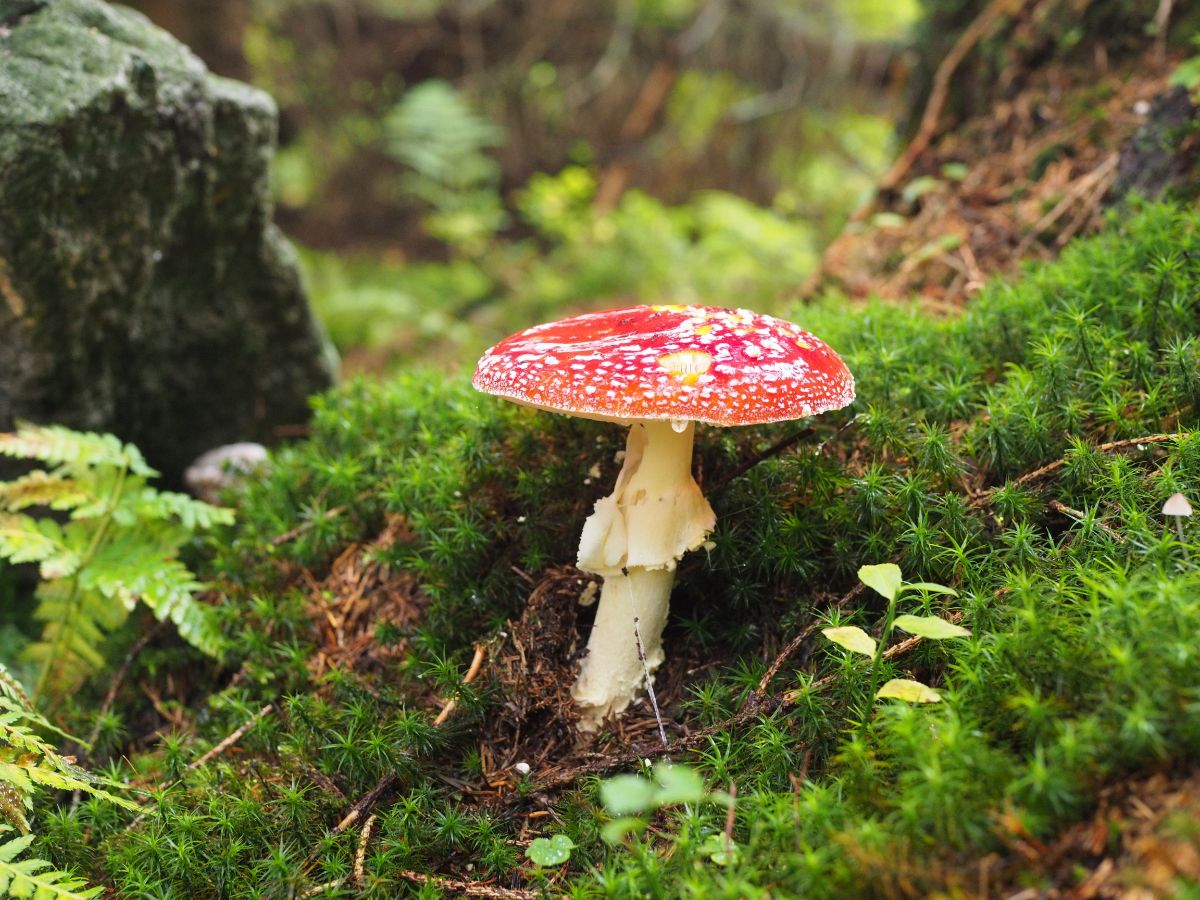
The Koryak also tell a tale regarding the fly agaric (wapaq). Eating this mushroom enabled Big Raven to transport a whale to its den. According to the story, Vahiyinin (“Existence”) spat onto the ground, and his saliva changed into the wapaq and its warts. After seeing the potency of the wapaq, Raven was so excited that he commanded it to grow eternally on earth so his people could gain knowledge from it.
The fly agaric has made its way into popular culture and literature. It is almost certainly the inspiration for Lewis Carrol’s “Alice’s Adventures in Wonderland,” where Alice grows and shrinks by consuming parts of a mushroom. In the Smurfs cartoon, their cute little mushroom houses are Amanita muscaria. The 1940 Disney film Fantasia featured a fly agaric mushroom dancing sequence.
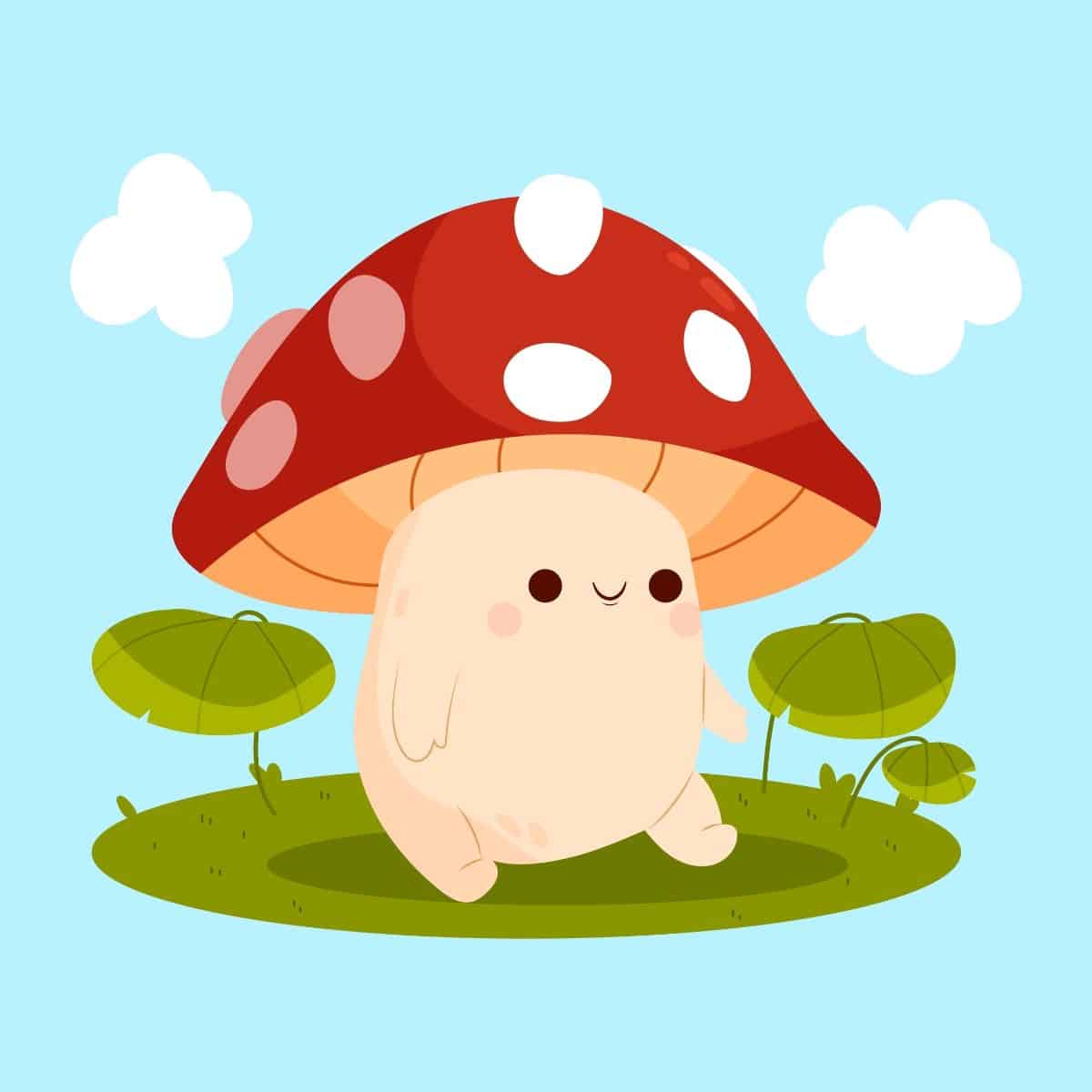
The Super Mario Brothers video game is one of the most currently well-known visualizations of the fly agaric. Mario and Luigi take mushrooms to “power-up,” a direct invocation of the mushroom’s mind and body-altering properties.
Fly agaric mushrooms were first seen in paintings during the Renaissance. During that time, they were usually just a detail in a larger picture. In Victorian times, this bright red mushroom took more center stage in fairy drawings and other artwork.
There might be an association between the vibrant red and white colors of the fly agaric with the coat of Father Christmas or Santa Claus – or an even deeper connection. Remnants of pagan traditions in Christian celebrations are still recognizable in today’s culture. Fly agaric, with its phallic shape, symbolized luck and fertility in the pre-Christian Germanic traditions. And the fly agaric features prominently in Christmas cards and decorations in Germany and Austria still through this day (Coincidence? Not likely!).

Santa Claus combines various Christian and Northern pagan traditions (most notably, Finnish and Scandinavian). It makes sense that Santa wears red and white and that the two primary Christmas colors are red and white. Quite possibly, the reason the reindeer can fly is because they’ve taken some fly agaric, a throw-back to shamanistic traditions?!? Interestingly, similarly to how A. muscaria is harvested by shamans under pine trees due to their ectomycorrhizal nature, Santa Claus places gifts under the green fir tree on Christmas Eve.
Fly agaric fungi are native to forests in the Northern Hemisphere but have spread to parts of the Southern Hemisphere. This species relatively easily relocates as long as its preferred host tree is present.
Amanita muscaria even makes it into creative cooking inspiration! How adorable are these “fly agaric” snacks?!

Fly Agaric Identification
Season
The fly agaric typically appears from August to November.
Habitat
The fly agaric is an ectomycorrhizal species, meaning it forms symbiotic relationships with various trees, most often birches, pines, and spruces. It is often found in groups in all types of woodlands. It is known to recur in the same location for several years, often forming large, eye-catching groups.
It is commonly sighted in the northern hemisphere, including Britain, Ireland, mainland Europe, Asia, the USA, and Canada. In the USA, it is found in its classic red form and orange and yellow variants (listed further down, with images.).
Fly agarics are known to grow in fairy rings, which only adds to their mystery and lore.
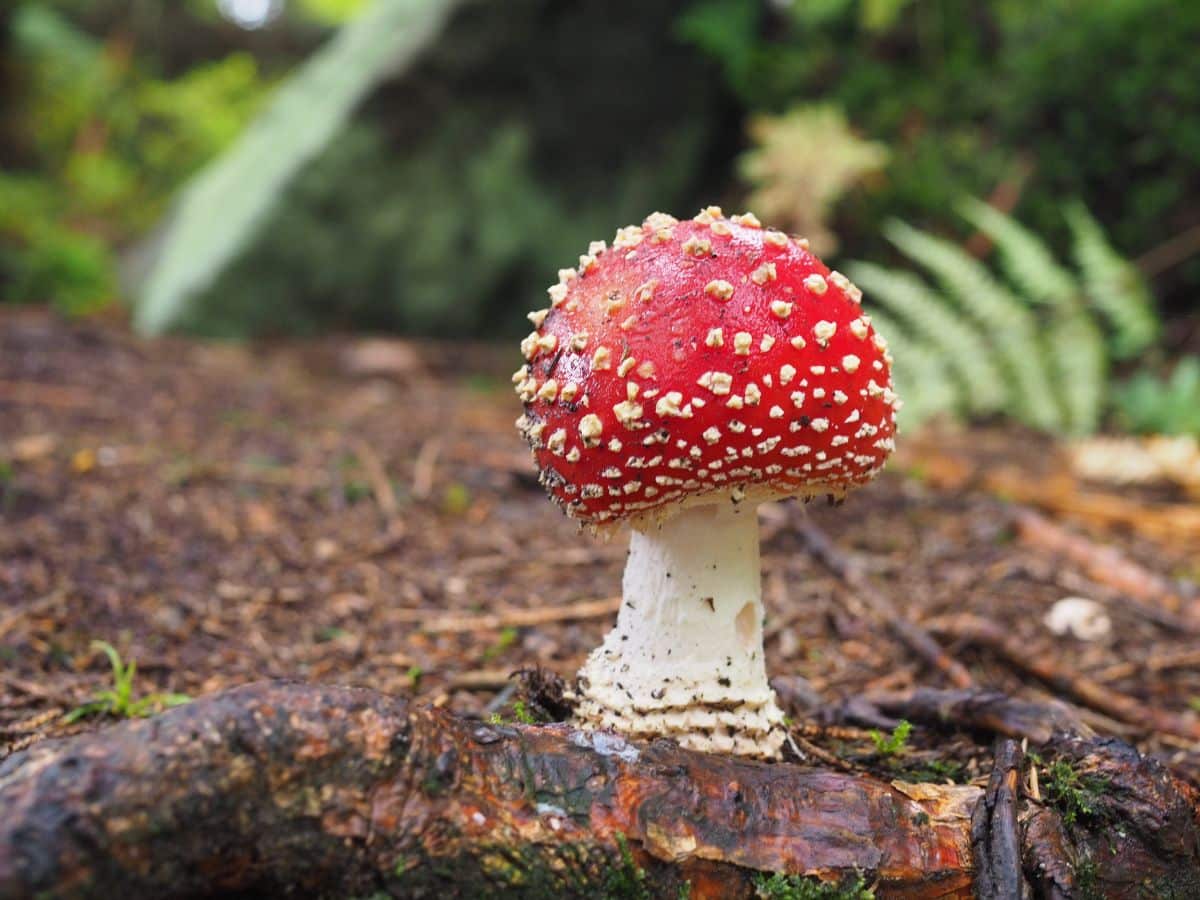
Identification
Volva (cup-like sheath)
The fly agaric starts out encased in an egg-like white sac called a volva. It literally looks like a white egg buried in the soil. As the mushroom matures, the volva casing breaks apart so the cap and stalk can emerge. The volva remains at the base of the stalk, looking like a cup or half an eggshell encircling the stem. The volva cup is often buried beneath the surface of the soil.
Cap
The cap of the fly agaric starts out rounded, like a bulb. As it grows, it flattens out to look like a large saucer. With advanced maturity, the cap edges will flip upwards like wings. It ranges from 4-8 inches in diameter when mature. It is typically red, occasionally orange, and very rarely, a white variant can be found. The color may fade with age or after significant rains.
As the cap expands, the skin reveals a pattern of white warts or “scales.” These are leftover bits from the universal veil that encased the mushroom when it was young. The warts are large on younger specimens and smaller on larger ones. This isn’t due to the warts changing size, though. They stay the same size but look smaller as the cap grows.
Gills
The gills of the fly agaric are white, free from the stem, and crowded.
Stem
The stem is 4-10 inches long. It is white with a grooved, hanging white ring on the upper portion. The stem has remnants of the universal veil as fragments or scales around the base. The length of the stem might also have lots of shaggy veil fragments on it or it may be mostly smooth. This varies quite a bit.
Around the base of the stem are also the remnants of the white egg-like looking volva that held the mushroom when first emerging. As the mushroom grows, it breaks free from the sac, leaving a portion still in the ground around the base of the stem. This volva might not be immediately apparent and may require digging in the soil to find. It is a crucial part of identification, so checking for the white “egg” sac is important.
The stem is often bulbous and tapered near the base.
Flesh and Odor
The flesh turns from white to yellow when exposed to air. The fly agaric does not have a distinctive odor.
Spore Print
The spore print is white.


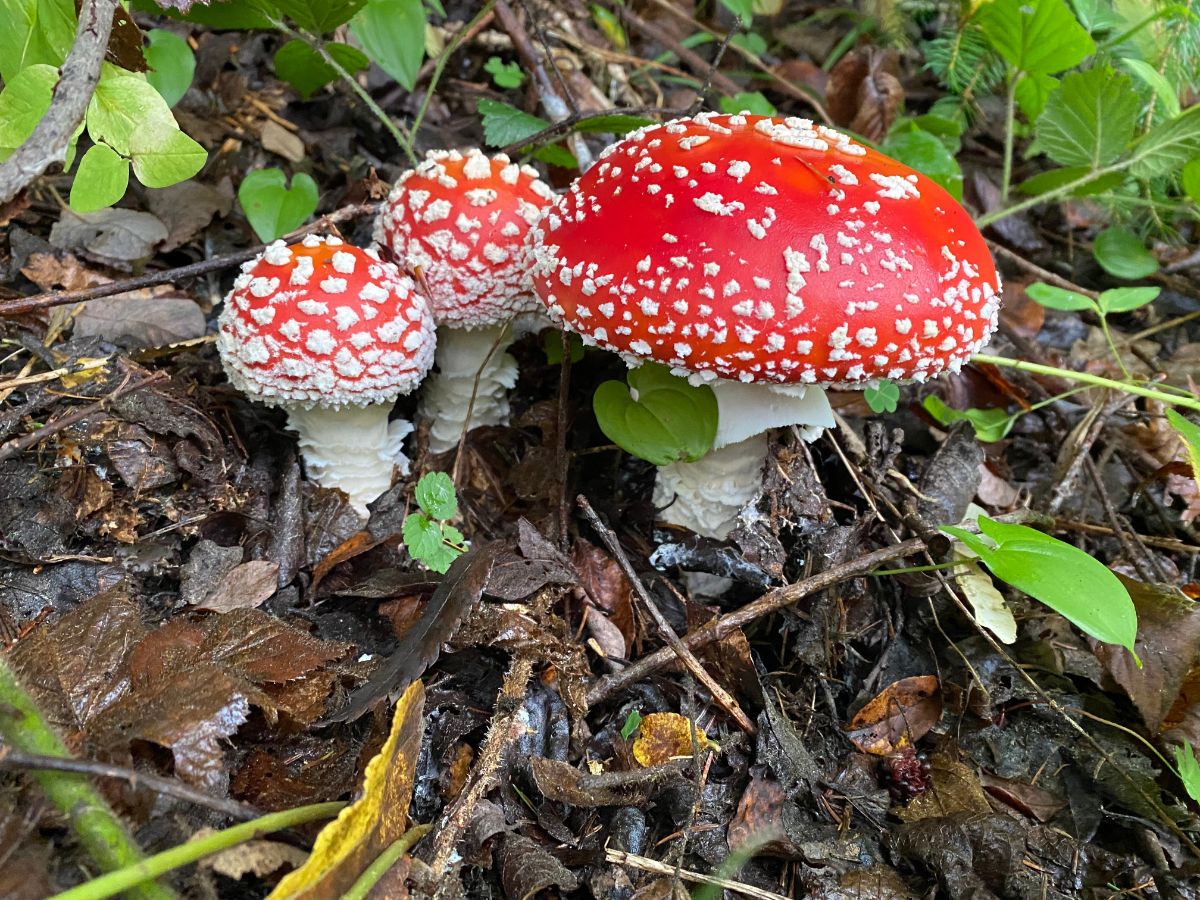

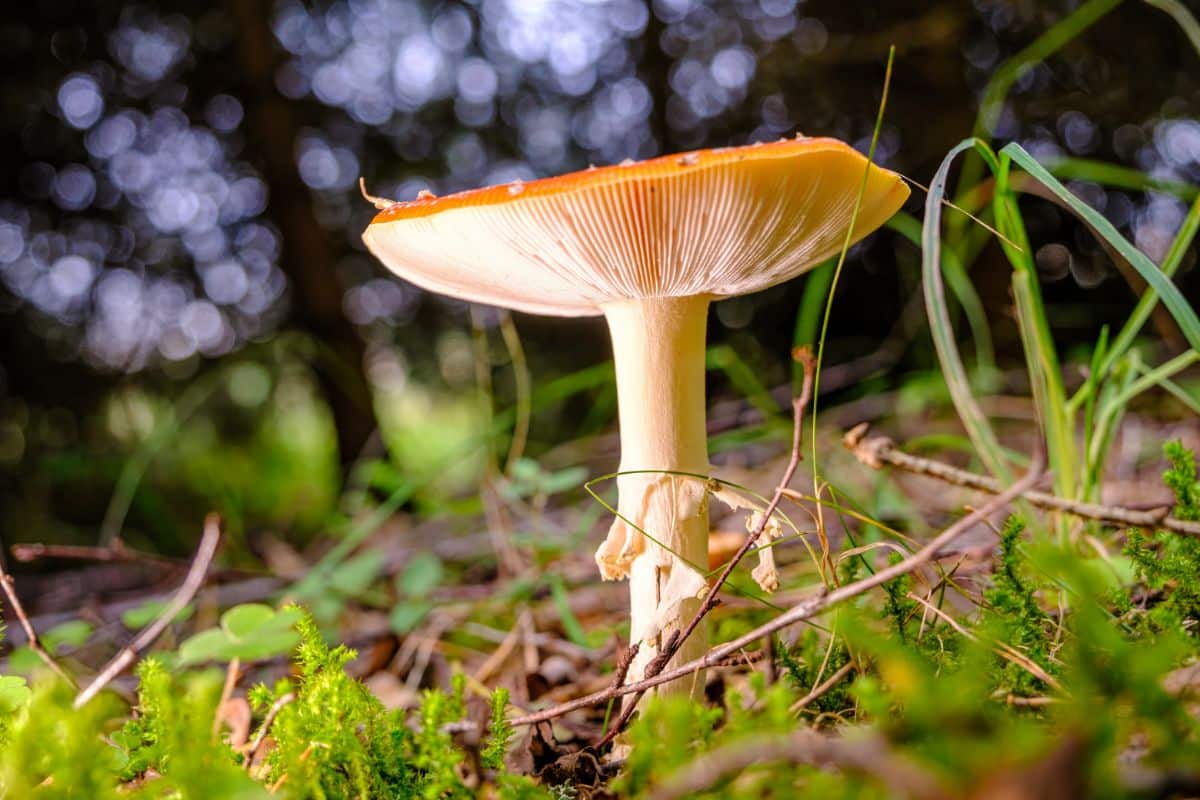
North American Fly Agaric Varieties
This is a changing species complex as new field data and DNA sequences are collected. These names will likely change in the near future, either by combining species or including new ones, or both. For now, this is where it stands. Although, there are likely people who will disagree with this list, too, as it really is more like a guideline than anything set in stone.
Amanita muscaria var. guessowii has a yellow to orange cap instead of red. The center of the cap is usually deeper orange or close to reddish-orange. This species appears in northeastern North America, down to Tennessee.
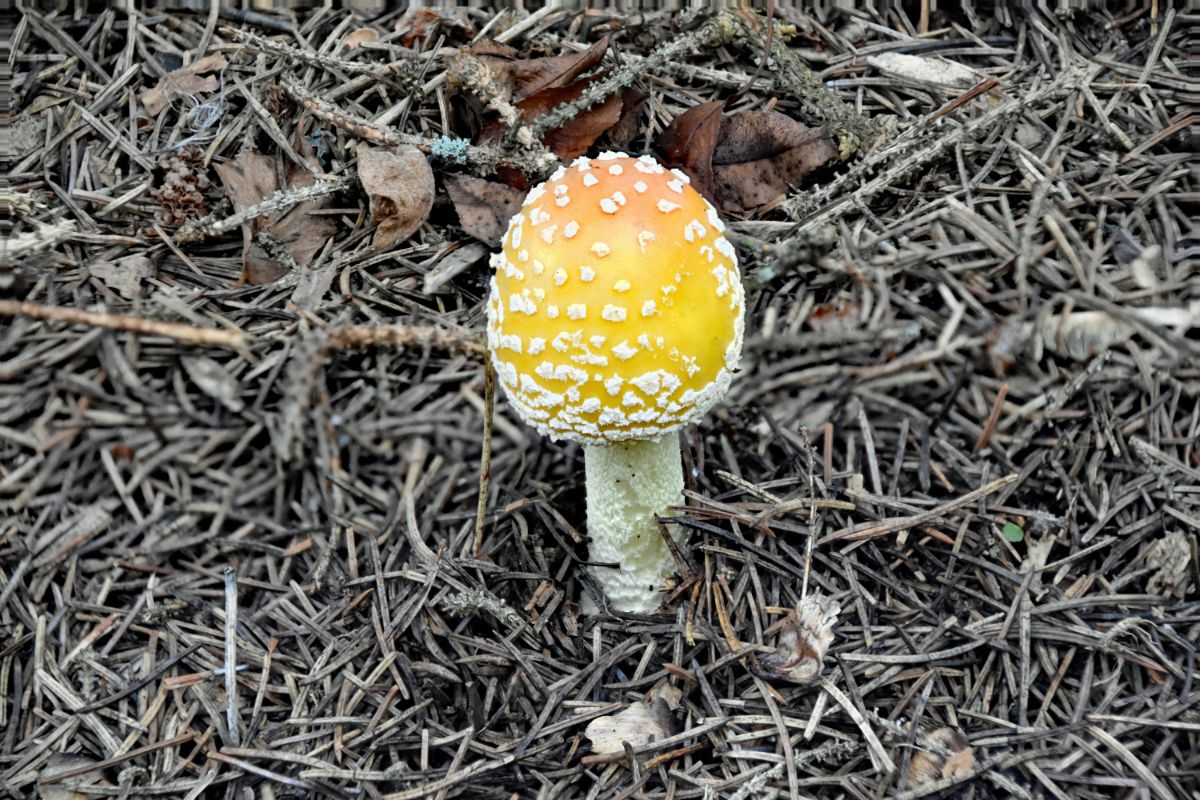
Amanita muscaria var. flavivolvata is red with yellow or light yellow warts and a very shaggy white stem. It occurs in southern Alaska, south through the Rocky Mountains, and down through Central America and into northern Colombia.
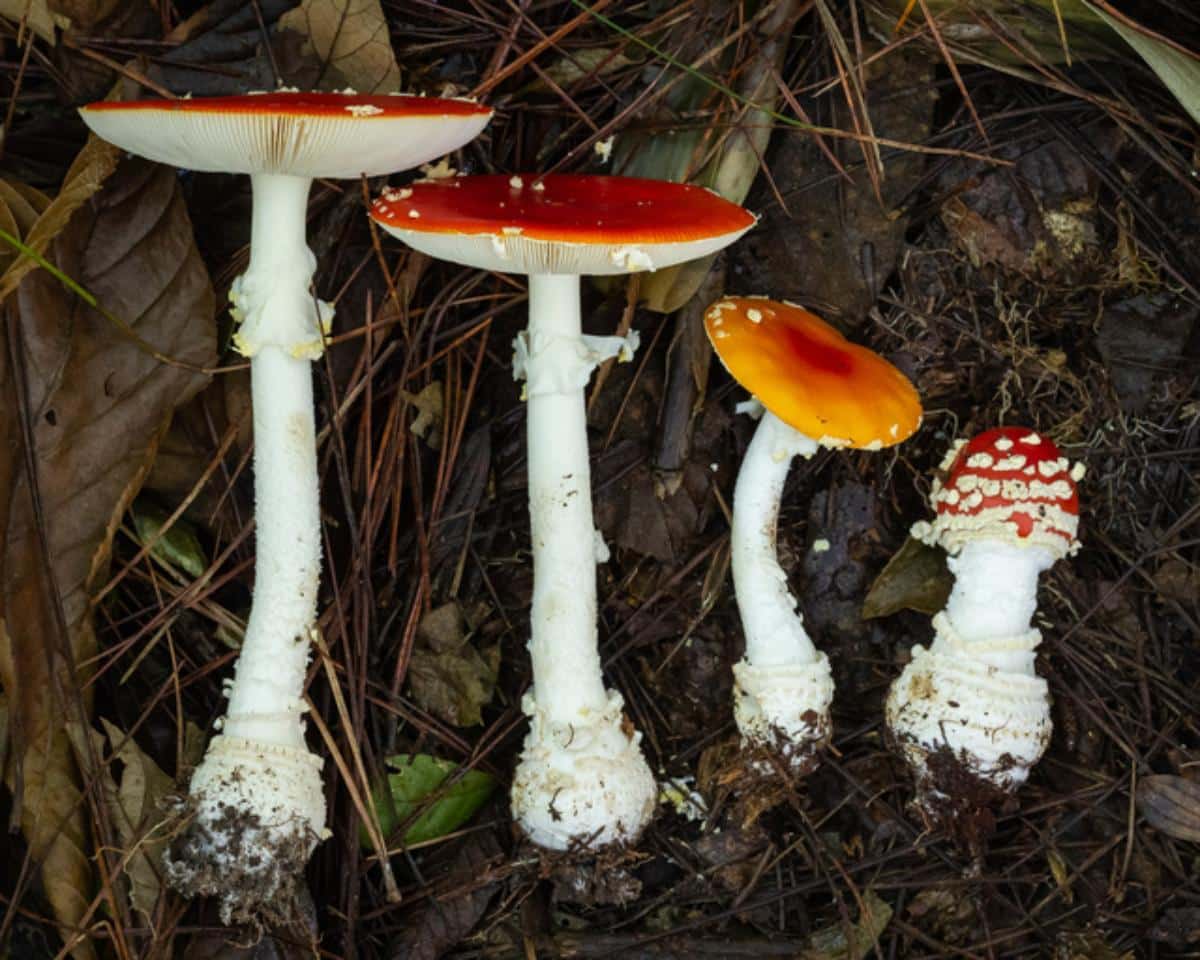
Amanita chrysoblema (Amanita muscaria var. alba) is entirely white. This type may be a white variety of Amanita muscaria var. flavivolvata instead of its own species. It is found in the Northern US, from New York across to Washington State.
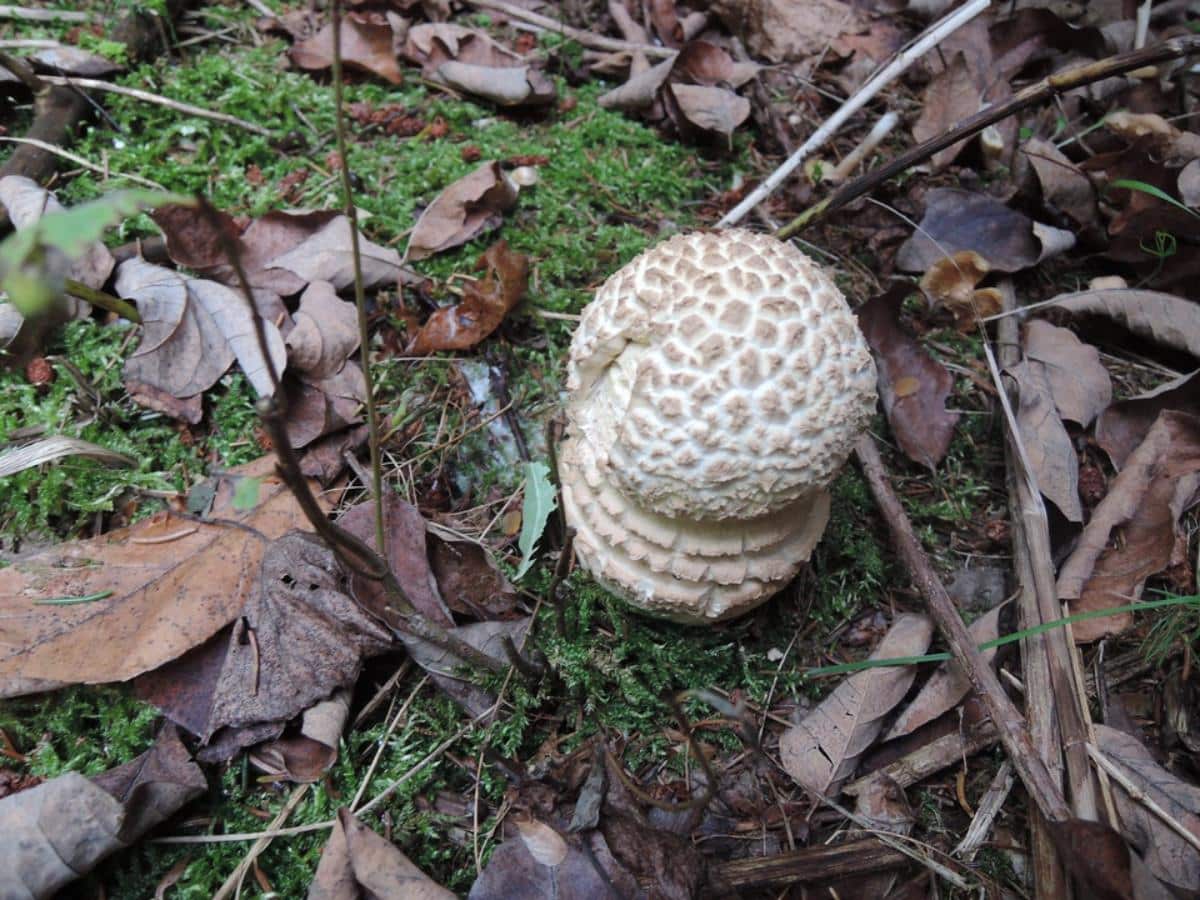
Amanita persicina (AKA Amanita muscaria var. persicina) has a peachy or reddish-orange cap with light yellow warts. It is found primarily in the southeast but has also been reported in New Jersey and New York. This species used to be part of the Amanita muscaria species complex, but a study from 2015 reclassified it as its own distinct species.
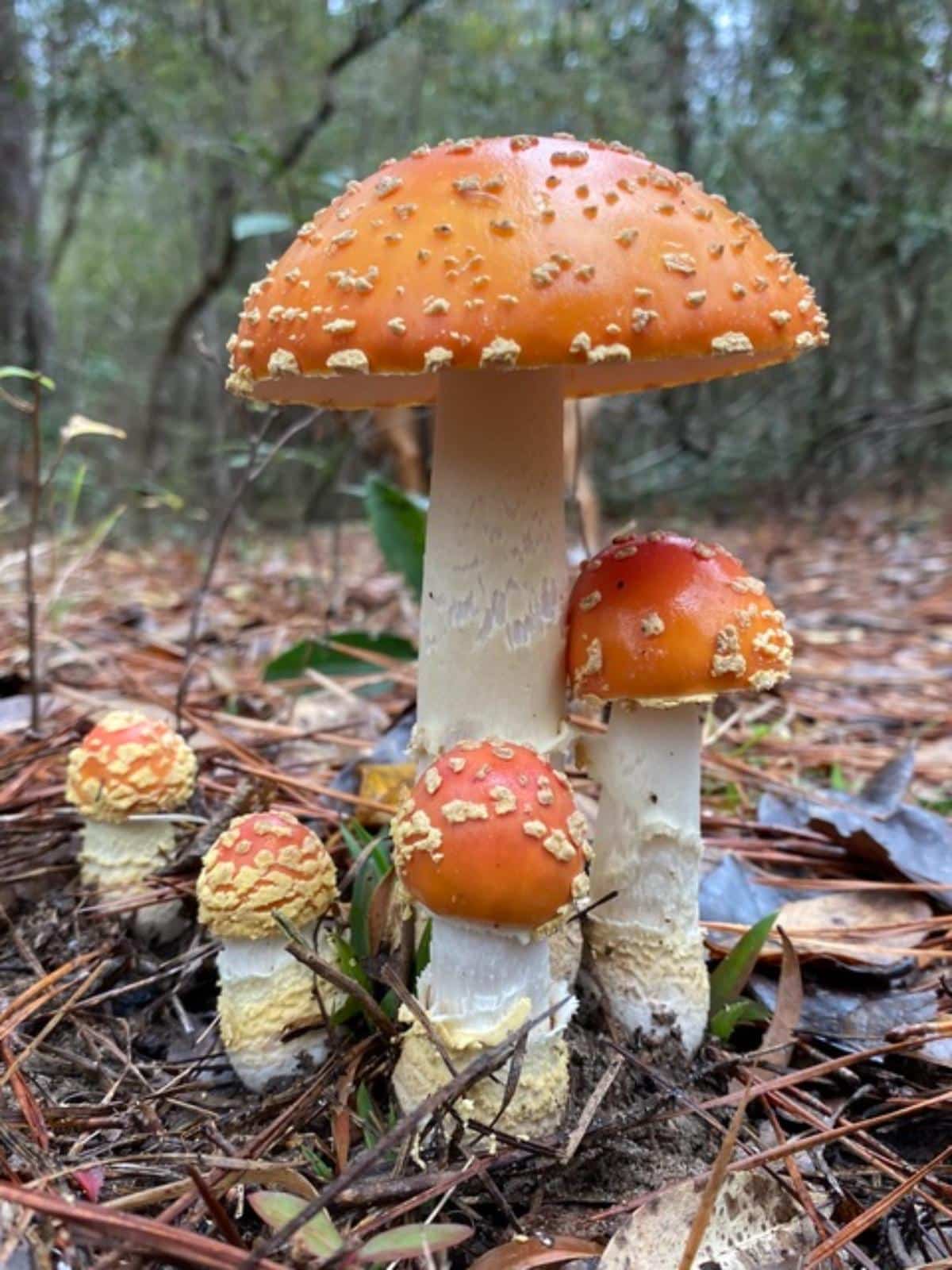
The book Amanitas of North America is an excellent resource for anyone interested in a deeper dive into this species.
Fly Agaric Lookalikes
Caesar’s Mushroom (Amanita Caesar complex)
This species features a brilliant orange-red cap with a striated margin and yellow-orange stem and gills. It does not have warts on the cap. There are actually several Caesar species in North America. These are excellent edible mushrooms, but they should be foraged with caution due to the ease with which they get confused with the fly agaric.

The Blusher (Amanita amerirubescens species complex)
This Amanita is generally tan-colored, with whitish warts on top. But, sometimes, the caps are more orange or have yellow blushing, which makes them look more like the fly agaric. The primary difference is they usually lack the bright coloring of Amanita muscaria and their stems and flesh turn pinkish-red when damaged.
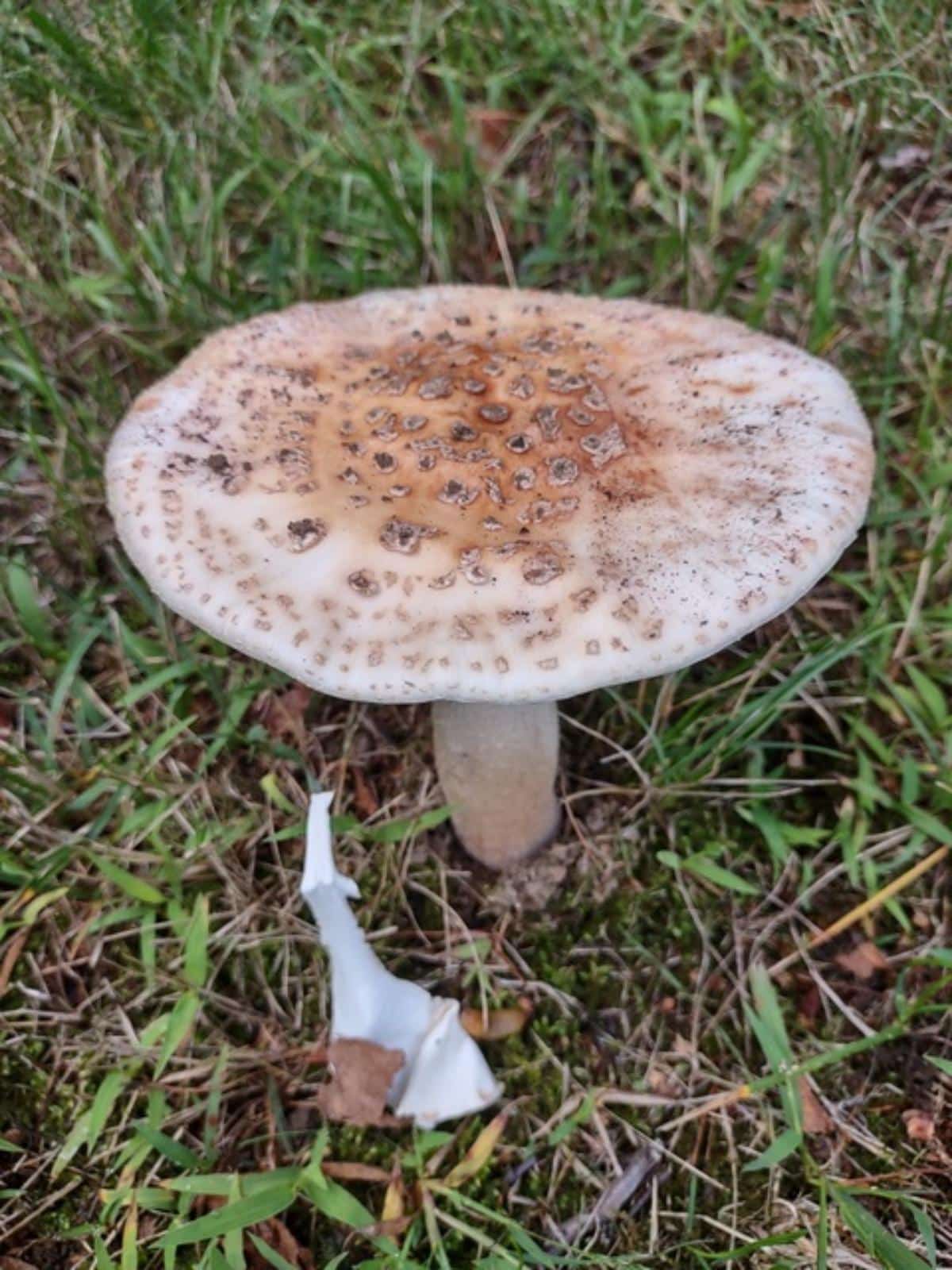
Red Russulas (Russula spp.)
Russula mushrooms have a bright red cap just like the fly agaric. But they are much more plain looking. They do not have warts on the cap, a ring around the stem, or a volva at the stem base. There are dozens of Russula species in North America, and many have red-caps. One is toxic, the others are not.
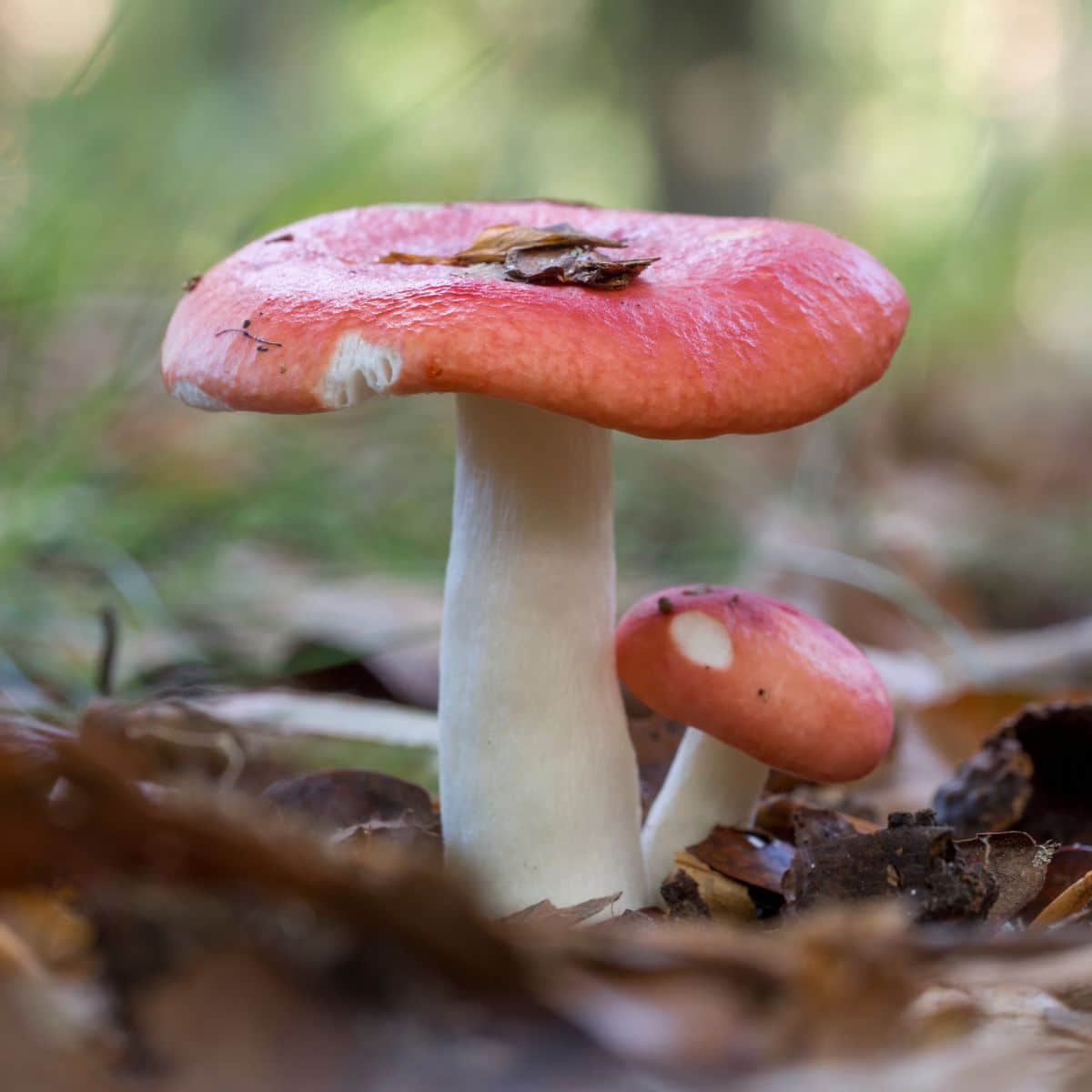
Gemmed Amanita (Amanita gemmata species complex)
These species closely resemble the fly agaric with a dull yellow to golden yellow cap. In youth, they have white warts on the cap, but they are flimsy and wash away easily in a rainstorm. So, they often lack the characteristic white warts on the cap when you see them. Their stems are pale yellow instead of white, and the flimsy white skirt may be there or have fallen off. They are also much smaller than the fly agaric, rarely growing more than 4″ across.
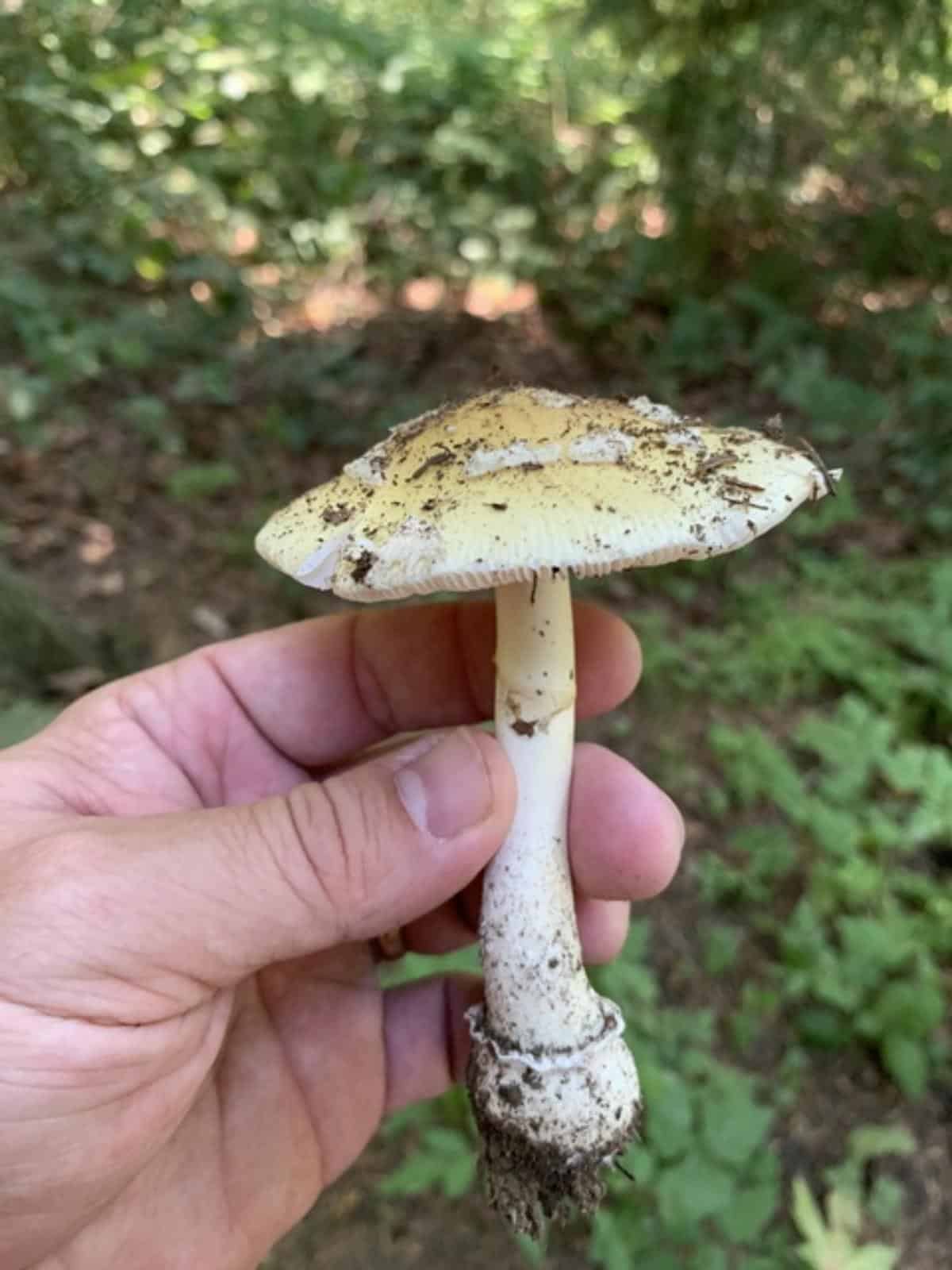
Yellow Patches (Amanita flavoconia)
This mushroom has a deep yellow-orange cap and dark yellowish warts, which can be mistaken for the fly agaric’s yellow varieties. One difference is that yellow patches has a pale yellow stem, not white like the fly agaric. Yellow patches also has powdery yellow remnants from the universal veil around the base of the stem. These powdery patches can easily be missed or lost while extracting the mushroom from the ground, so dig around the base carefully.
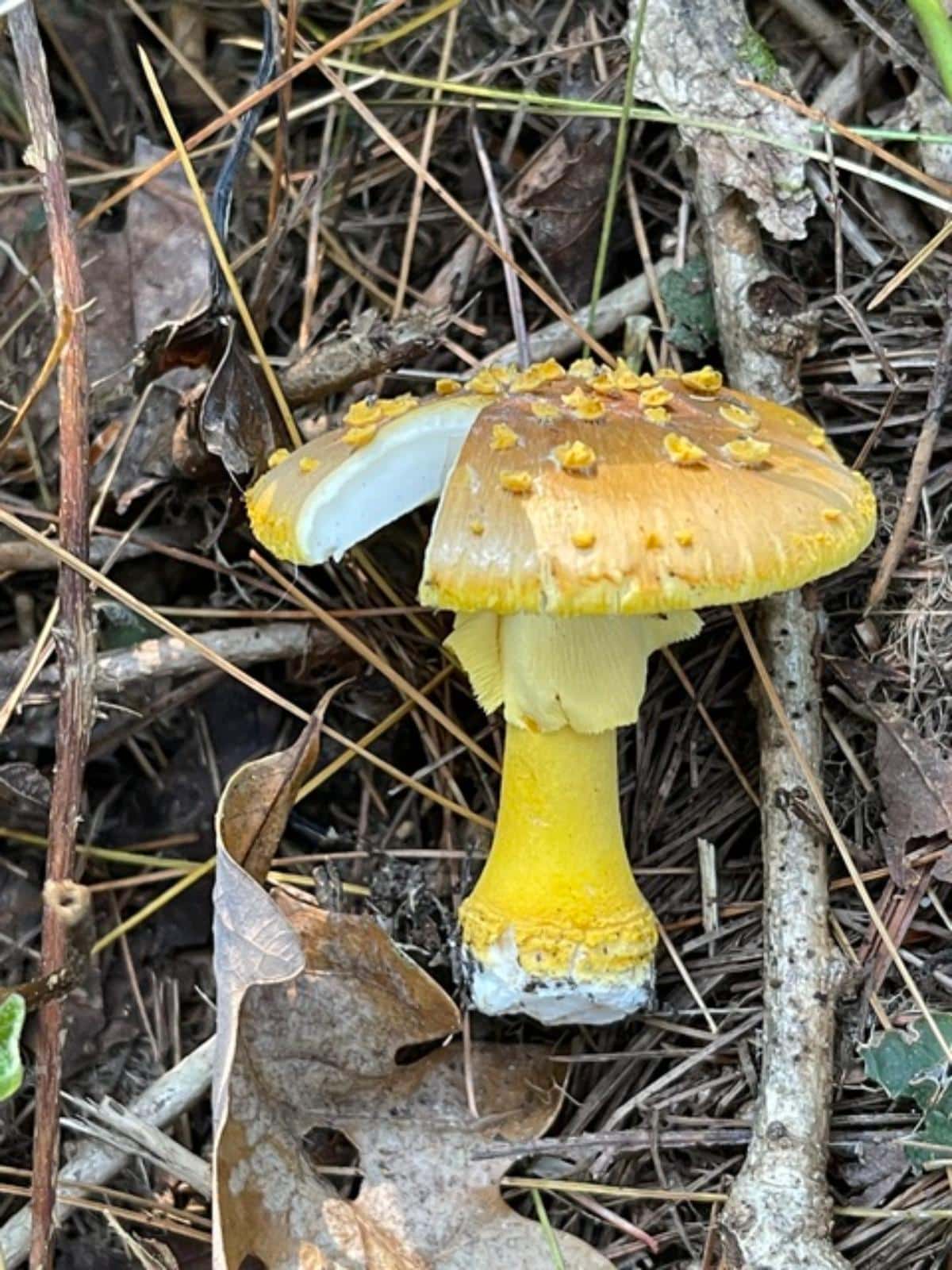
Edibility of the Fly Agaric
The fly agaric is toxic when consumed raw due to the presence of psychoactive and toxic properties. It contains muscimol, muscarine, and ibotenic acid, which can induce a range of symptoms, including drowsiness, nausea, vomiting, tremors, diarrhea, and hallucinations. In extreme poisonings, seizures and coma can happen.
While eating one mushroom won’t lead to death, it will make the eater quite sick. It usually takes 12-24 hours for a person to recover, depending on dosage, age, and weight of the person. There is no antidote, but supportive treatment is usually enough to keep a person safe. This is often necessary due to agitation, auditory and visual hallucinations, delirium, and seizures.
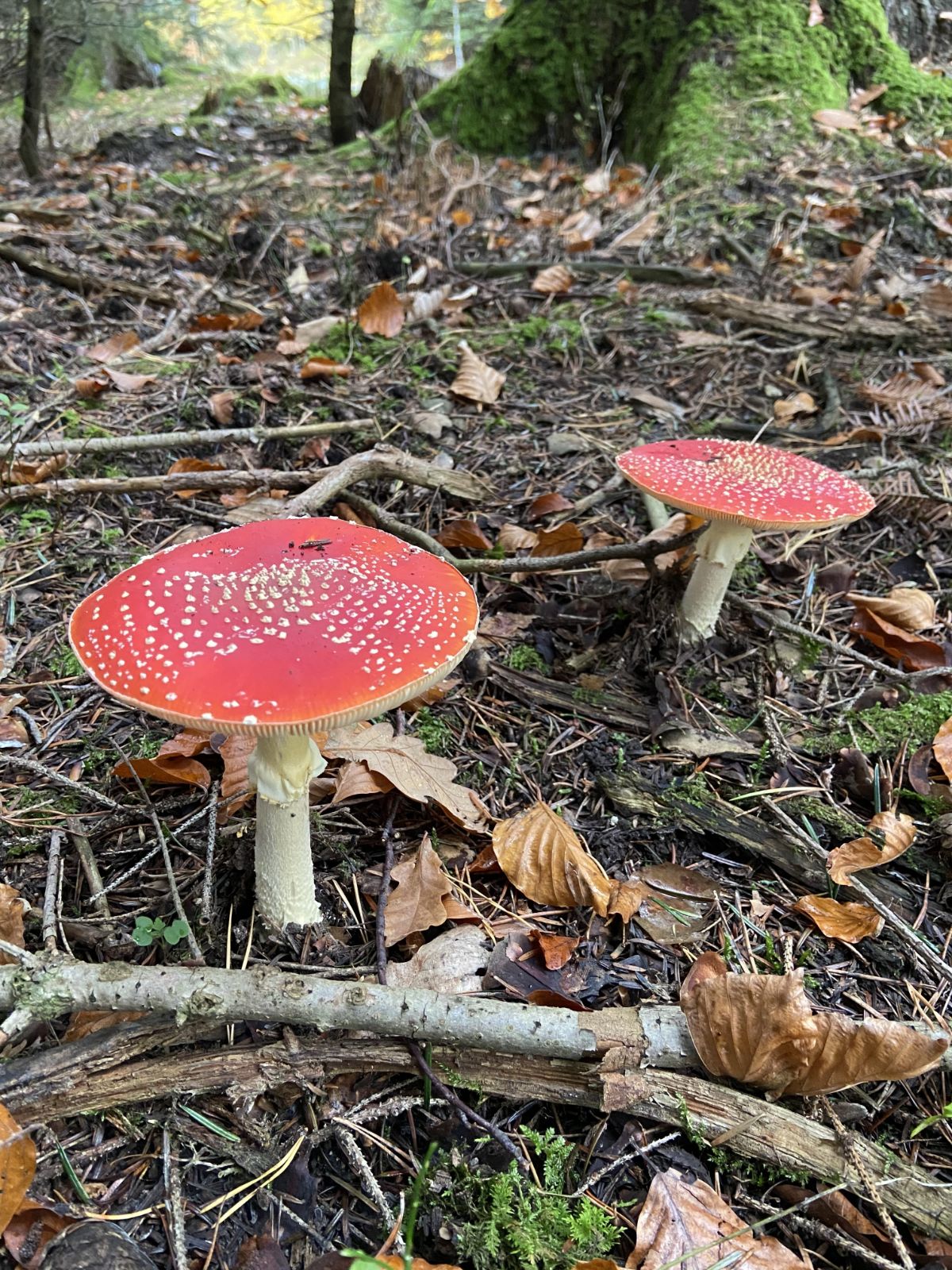
Often, the eater is unaware of their surroundings and may accidentally hurt themselves or pass out. Hallucinations reported after eating this mushroom include auditory and visual distortions, agitation, disorientation, and bizarre behaviors. The lethal dose for an adult human is calculated (approximated) to be 15 fly agaric caps.
It is essential to note that the ratio and amount of hallucinogenic properties varies widely by region and by season. There is no way to know the exact amounts unless it is analyzed before consumption. Recent research suggests that spring and summer fruiting are significantly stronger than autumn ones. There is a lot of unpredictability in what will happen.
There are a few reported deaths resulting from eating fly agaric. More common, though, are poisonings in which the person gets very ill. This mushroom isn’t as deadly as it once was, thanks to modern medicine.
The most well-known death from eating fly agarics happened in 1897 when Count Achilles de Vecchj asked for Caesar mushrooms from the Virginia countryside. He thought the fly agarics were the same as the edible (and delicious) Caesar mushrooms common in Italy, which are often eaten raw. After eating 12-24 caps, he died of severe convulsions so intense he broke the hotel bed.
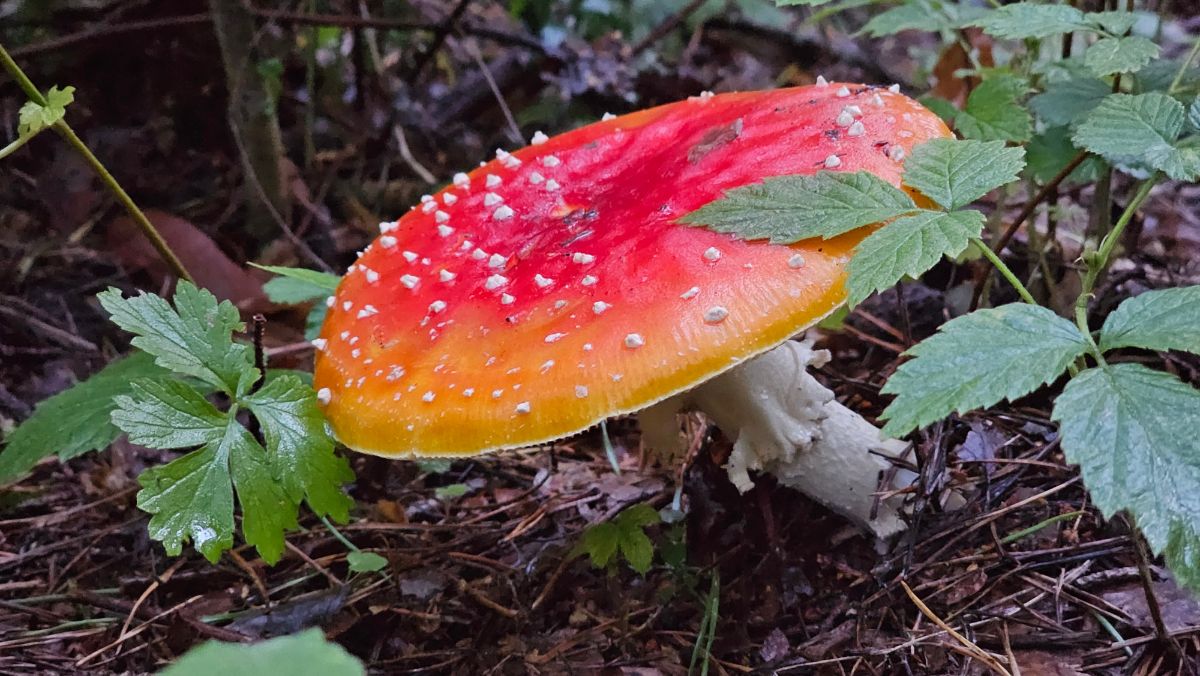
With proper preparation, the fly agaric is made edible. The toxins are water-soluble, so parboiling the sliced mushroom and discarding the liquid make it safe for consumption. The exact time it needs to boil, how many times you need to do it, and how many rinses afterward vary depending on who you ask. All in all, it’s a lot of work to make a poisonous mushroom into a safe food when there are so many fabulous mushrooms to choose from. Of course, if it is a matter of survival like it was for many indigenous tribes and groups that ate (and still eat) it, that makes sense.
We do not recommend eating this mushroom. It is certainly rendered non-toxic from the boiling, but some people have gotten very ill from forgetting to discard the water. Or not boiling it long enough. Or not boiling it enough times. Remember, toxicity varies by region, season, and habitat. We don’t feel it’s necessary to take chances just for the thrill of saying we’ve eaten the mushroom.
Of course, if you intend to use this mushroom for its hallucinogenic properties, that’s another story. And, sorry, we’ll not be assisting with that. There are plenty of other websites that will tell you how to go about doing it.

Medicinal Properties of the Fly Agaric
While the Fly Agaric is primarily known for its psychoactive and toxic properties, it has also been used in traditional medicine for various purposes. Some cultures have utilized its compounds for their sedative, hypnotic, and analgesic properties. However, there are significant risks associated with consuming this mushroom, so if you decide to take it medicinally, be very careful.
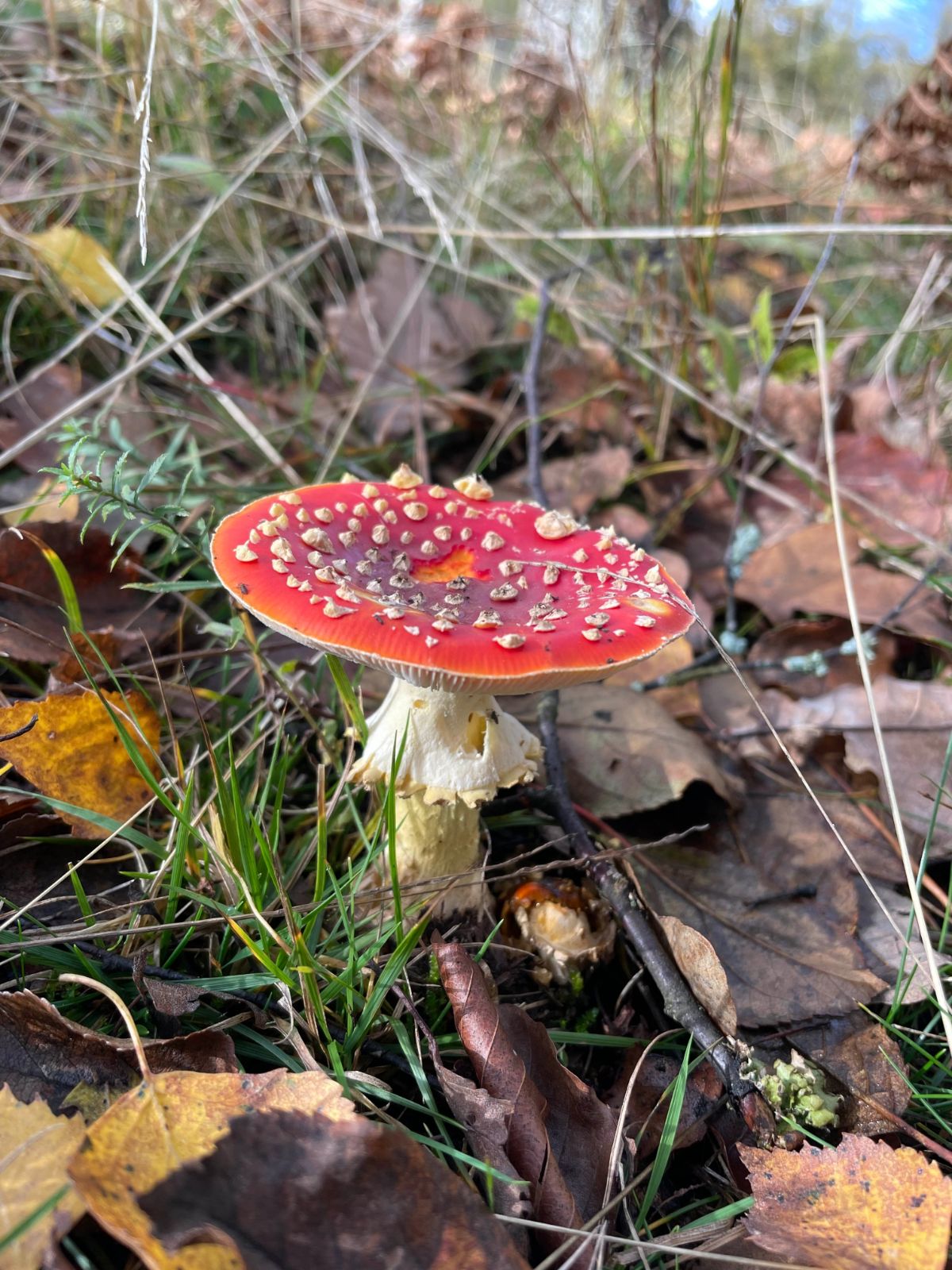
Can I grow Amanita muscaria?
No. Or, maybe. Since it is an ectomycorrhizal species growing in association with specific tree species, it is too complicated to replicate in a lab. At least for now. It can grow on synthetic materials but grows extremely slowly and unreliably.
Is it dangerous to touch the fly agaric?
No. You cannot absorb toxins or poisons from touching mushrooms. They must be ingested to experience any of the effects. Don’t worry about picking these with your bare hands to remove from your lawn or elsewhere.
Can you eat fly agaric (Amanita muscaria)?
It is not edible raw; it will make you quite ill and can be deadly if a lot is eaten. Fly agarics can be made edible by boiling and discarding the water (more detail is in the article); be sure to read up on traditional processes for doing this before attempting it. This is not one you want to make mistakes with.
What happens when you eat fly agaric?
It depends on how much you eat. Common effects after eating this mushroom raw include vomiting, nausea, dizziness, delirium, hallucinations, involuntary movements, and seizures.
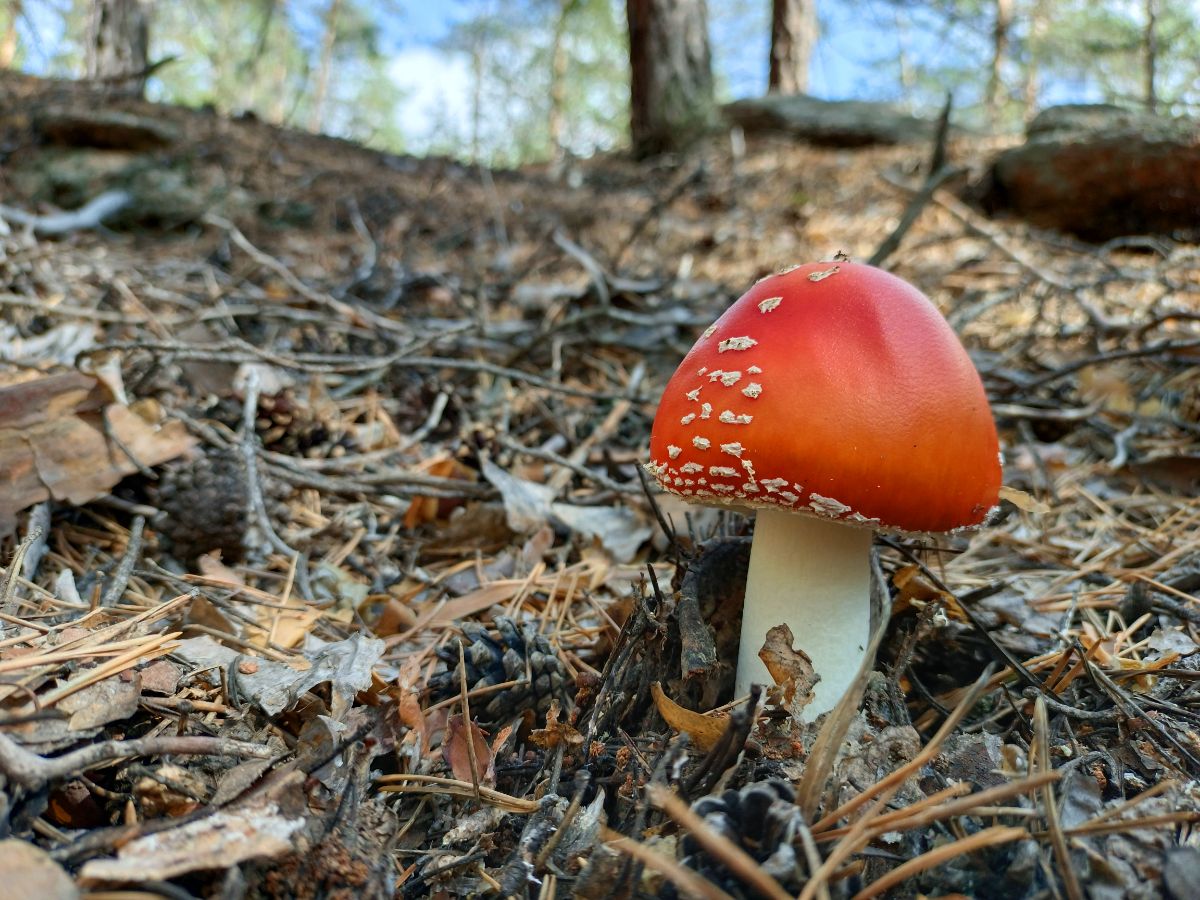
References:
Carboué Q, Lopez M. Amanita muscaria: Ecology, Chemistry, Myths. Encyclopedia. 2021; 1(3):905-914. https://doi.org/10.3390/encyclopedia1030069
Rampolli FI, Kamler P, Carnevale Carlino C, Bedussi F. The Deceptive Mushroom: Accidental Amanita muscaria Poisoning. Eur J Case Rep Intern Med. 2021 Feb 2;8(3):002212. doi: 10.12890/2021_002212. PMID: 33768066; PMCID: PMC7977045.





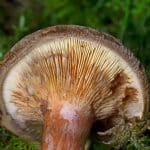
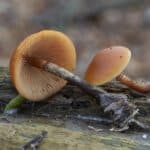
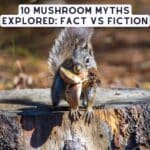

Felix says
What a beautiful Website. Thank you for all this precious work.
I really enjoyed discovering the page about Amanita Muscaria (I was searching about it), and was quite pleased with what i found here (quality, pictures, everything). It’s book marked.
Félix, Longueuil, Canada.
Jenny says
Thank you and I’m glad you find the site helpful! It means so much to hear positive response